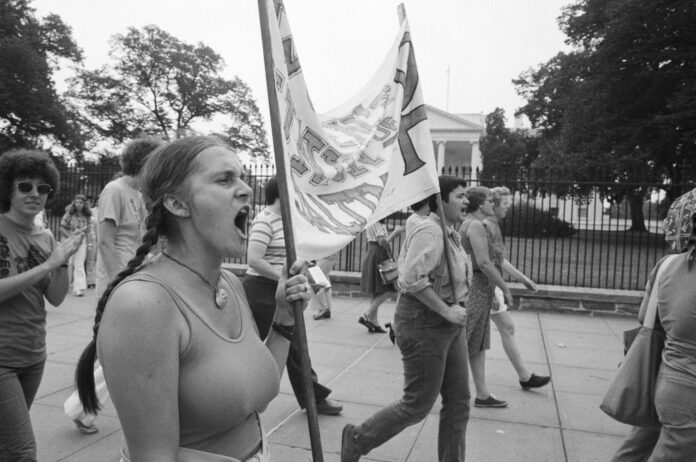In a world where gender equality is often taken for granted, it is imperative to take a step back and examine the historical contexts that framed women’s lives prior to the advent of feminist movements. This exploration reveals an era characterized by systemic inequalities, limited autonomy, and a cultural milieu that constricted women’s opportunities. Understanding this backdrop fosters a greater appreciation for the emancipatory actions that have unfolded since, and encourages younger generations to engage in the ongoing struggle for gender parity.
The Role of Women in Pre-Feminist Societies
Before the feminist movements gained momentum, women’s roles were primarily relegated to the domestic sphere. Societal norms dictated that women should aspire to become dutiful wives and mothers, emphasizing their roles as caretakers of the home. This ideology was intertwined with deeply ingrained patriarchal values. In the 19th century, women had limited access to education, financial resources, and professional opportunities. They were often viewed as extensions of their fathers or husbands rather than individuals with their own identities.
In agricultural societies, women contributed significantly through labor in fields and household enterprises, yet their contributions were devalued and largely invisible. Historians note that, despite their critical roles, women were systematically excluded from decision-making processes, thus reinforcing the notion that their primary responsibilities lay within domestic confines. This exclusion fostered a sense of dependency that permeated women’s lives across various cultures.
The Educational Divide: Knowledge as Power
Education serves as a cornerstone for empowerment, yet, prior to feminist interventions, educational opportunities were fundamentally skewed. With rare exceptions, access to formal education was predominantly available to men. Regardless of social class, the prevailing belief was that women’s primary function was to maintain the home and uphold familial traditions. Consequently, educational curricula were often designed to prepare women for domestic duties, not to cultivate independent thinkers or innovators.
As a result of this educational divide, women lacked the intellectual tools necessary to challenge the dominant paradigms that constrained them. The limitations placed upon women transposed into the broader societal framework, perpetuating cycles of disenfranchisement. In contrast, male counterparts were groomed with the knowledge and skills that enabled them to ascend into influential positions in politics, business, and academia. The ramifications of this inequity are profound and continue to reverberate today.
Legal Restrictions: The Illusion of Autonomy
In addition to educational disparities, women faced significant legal obstacles that perpetuated their subjugation. Until the late 19th and early 20th centuries, women were afforded minimal rights under the law. In many jurisdictions, married women could not own property, initiate contracts, or seek redress in courts without the express permission of their husbands. This legal marginalization effectively rendered women as property, echoing broader societal perceptions of gender inferiority.
The legal framework of patriarchy dictated that women’s identities were subordinate to their familial ties. The notion of “coverture”—a legal doctrine under which a married woman’s legal rights were subsumed by her husband—exemplifies these restrictions. In essence, women were stripped of their legal personhood upon marriage, a reality that contrasts starkly with contemporary understandings of individual rights and personal autonomy.
The Awakening: Seeds of Change
Despite these formidable barriers, the 19th century bore witness to the early stirrings of feminist thought. The suffragette movement, emerging in the late 1800s, positioned women’s right to vote as a central tenet of social justice. Figures such as Susan B. Anthony and Emmeline Pankhurst galvanized women across nations, inspiring them to demand equal voting rights. These early feminists were vital in laying the groundwork for subsequent gender equality movements, showcasing that collective action could dismantle entrenched structures of inequality.
As women began to organize, articulate their grievances, and strategize around their rights, an intersectional awareness began to emerge. This understanding illuminated how race, class, and ethnicity intersected with gender, influencing the lived experiences of various groups of women in distinct ways. Such intersections remain fundamental to contemporary feminist discourse, highlighting that the struggle for equality is not monolithic but multifaceted and inclusive.
Consequences of Early Feminist Movements
The rise of early feminist movements constituted not only a response to prevailing inequalities but also a catalyst for broader societal transformations. The activism initiated by early feminists rippled through various domains of society, advocating for education, workplace rights, reproductive autonomy, and an end to gender-based violence. Through their tireless efforts, women began to claim spaces that had historically been denied to them.
The passage of the Married Women’s Property Act in various countries signified monumental progress. For the first time, women were allowed to hold property in their own names, signifying a step towards financial independence. Gradually, as public consciousness evolved, legal reforms unfolded, recalibrating societal expectations around gender roles. Women began to enter professions previously dominated by men, thus challenging and redefining traditional gender norms.
Reflections on Progress and the Ongoing Fight
While immense strides have been made since the inception of feminist movements, it is essential to acknowledge that the struggle for women’s rights is far from over. The systemic inequalities that characterized life before feminism may have evolved, yet they persist in nuanced forms. Gender wage gaps, underrepresentation in leadership positions, and the prevalence of gender-based violence continue to plague societies globally.
For the younger generation, understanding the historical context of women’s struggles enhances awareness of current challenges. Engaging with these narratives fosters a sense of empathy and urgency, galvanizing youth to participate actively in social justice initiatives. Furthermore, it is imperative to recognize the intersectionality of modern feminist movements, emphasizing that inclusive activism is crucial in addressing the diverse needs of all women, irrespective of race, class, or sexual orientation.
In conclusion, a comprehensive examination of life before feminism reveals a complex tapestry of oppression, resilience, and eventual awakening. While the past may offer a sobering glimpse into systemic inequalities, it also illustrates the powerful potential of collective action in driving social change. Through activism and education, the pivotal lessons of history continue to inspire future generations in the pursuit of a more equitable world.





























